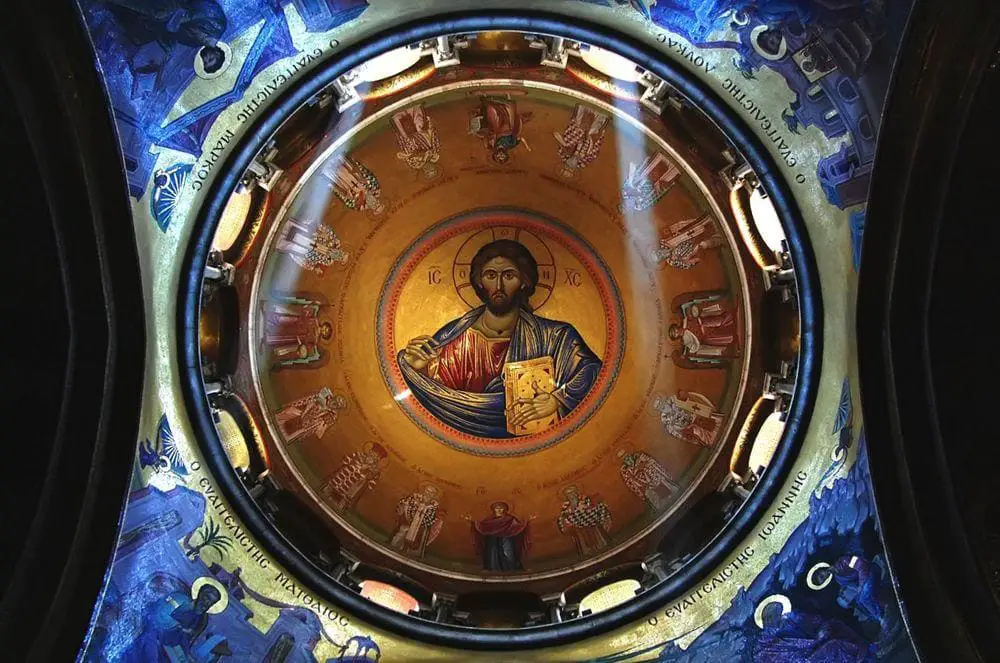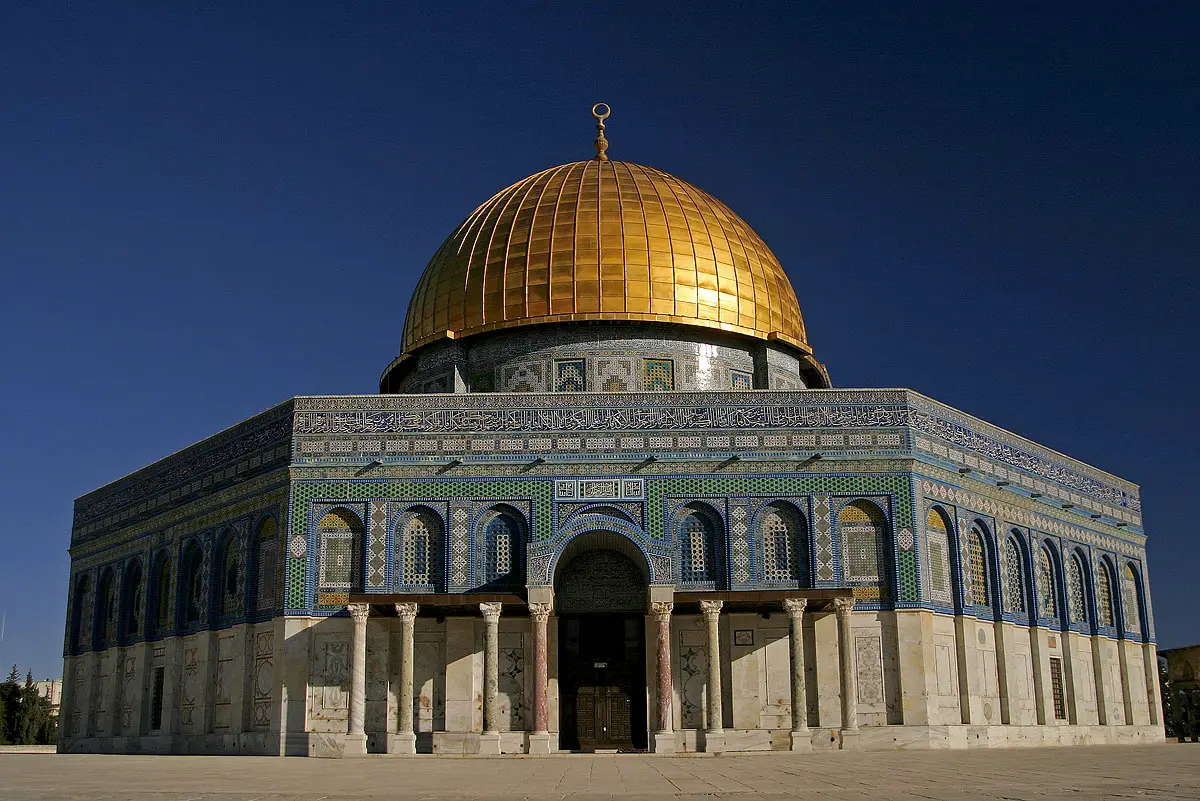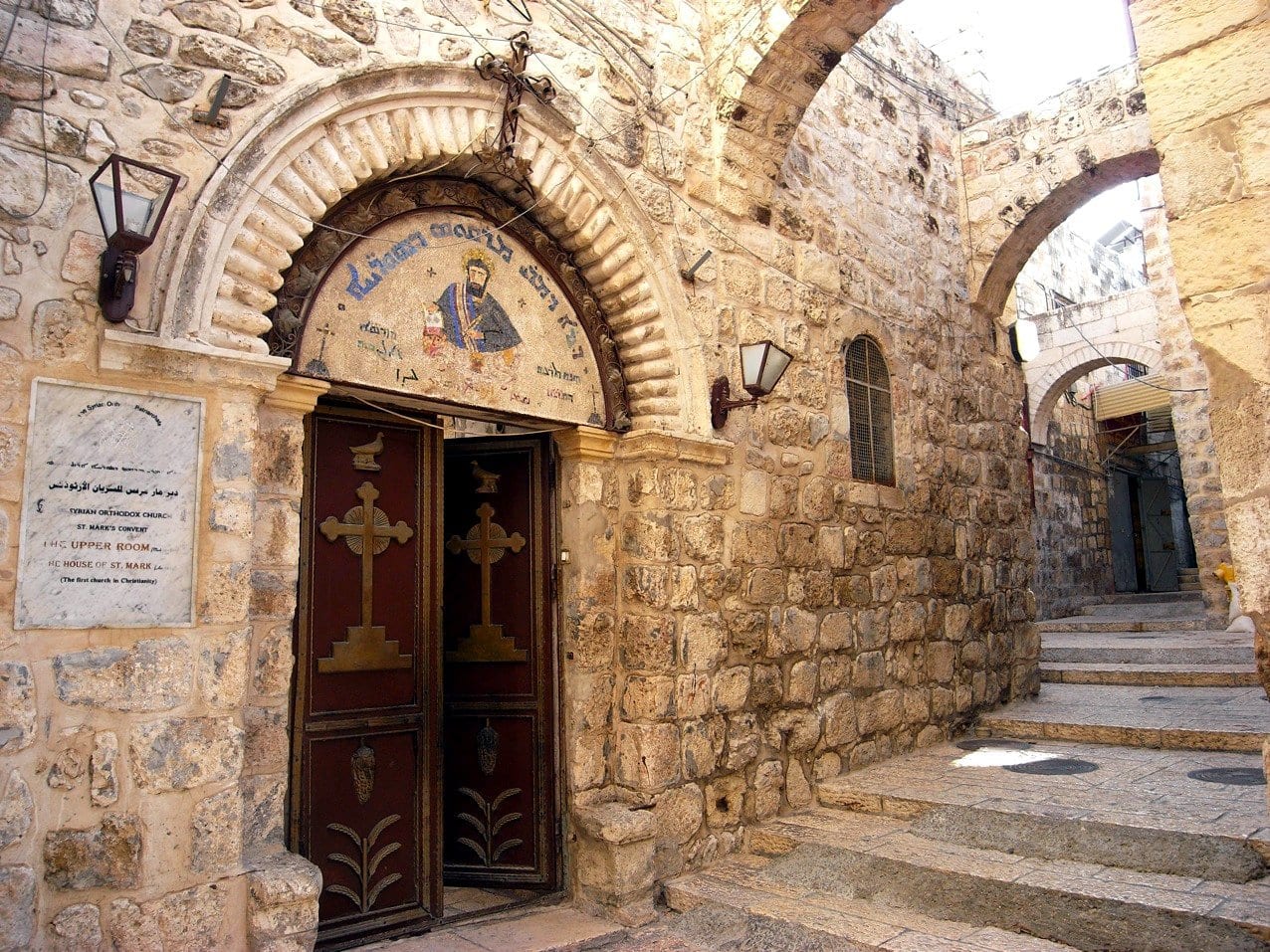World 🢖 Asia 🢖 Palestine 🢖 West Bank
Cities and towns 🢔 Settlements 🢔 Architecture wonders 🢔 Categories of wonders
Wonder
Jerusalem Old City
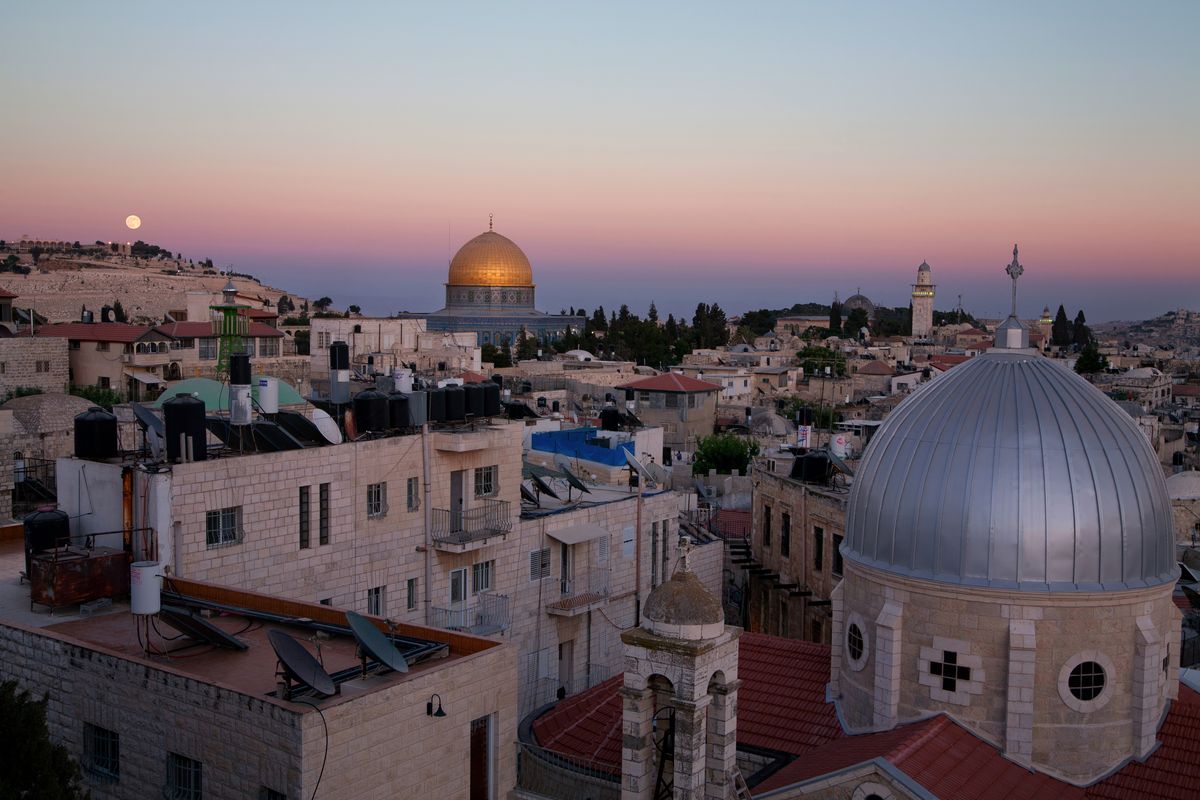
 In short
In short
Some 6 000 years ago was established a city with unusual fate, one of the most important and holiest cities in world history – Jerusalem. In the heart of it, in Jerusalem Old City are hundreds of monuments of world importance.
 72.1%
72.1%
GPS coordinates
Name in Hebrew
Name in Arabic
Founded
Area
UNESCO World Heritage status
Map of the site
If you see this after your page is loaded completely, leafletJS files are missing.
 In detail
In detail
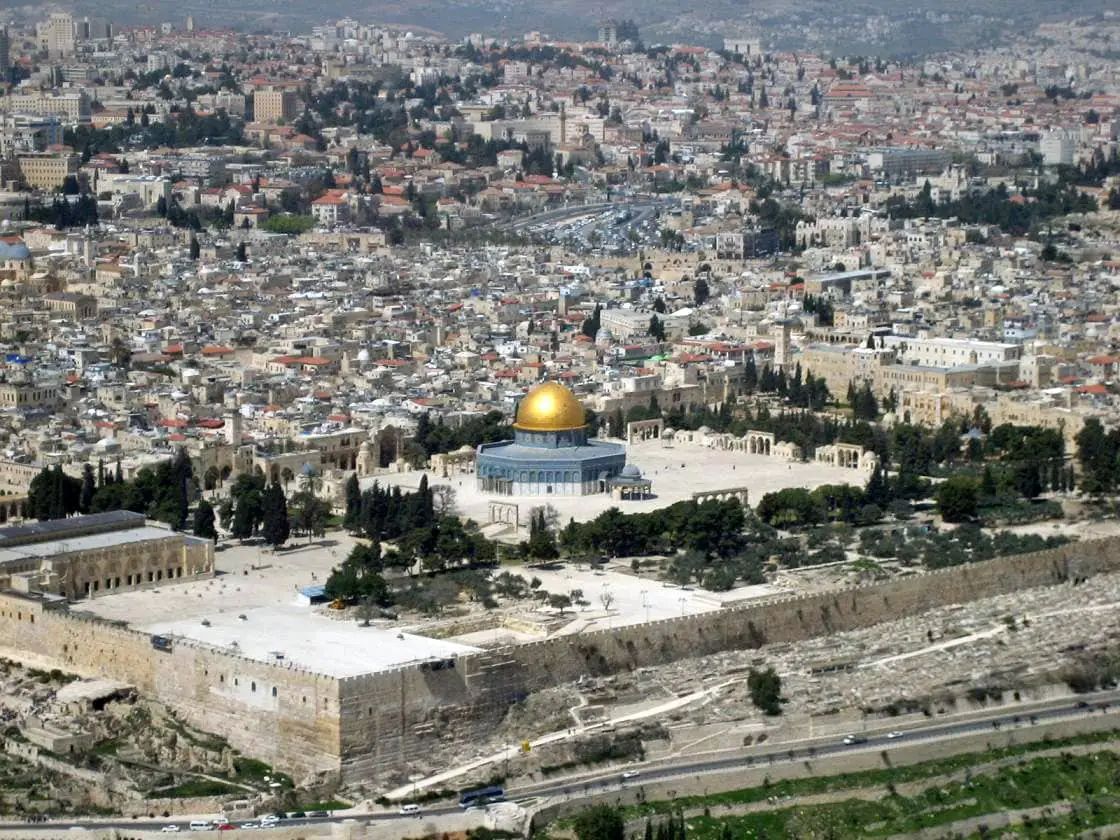
Which is the most significant city in the world? From a historical, religious, and symbolic point of view this, most likely, is Jerusalem.
This ancient city is the most sacred city for Christians and Christianity, the world’s largest religion and even more: for Judaism, the world’s oldest monotheistic religion. Jerusalem is seen as a very important symbol for Islam as well.
Chronology
A proper description of the history of Jerusalem would fit in a set of several thick books. Here are listed just a few most notable facts:
- Around 5000 – 4000 BC – a camp of shepherds evolved around Gihon Springs. This location is outside but close to the walls of the Jerusalem Old City, in the City of David.
- Around 3000 – 2800 BC (Early Bronze Age) – a permanently inhabited village appeared in the City of David. Most likely, the inhabitants were Canaanites, possible ancestors of the Israelites.
- Around 1900 BC – a settlement was first mentioned in written sources, ancient Egyptian texts. The name of the settlement seems to be similar to the present name: rwš3lmm (could be pronounced as Urušalim).
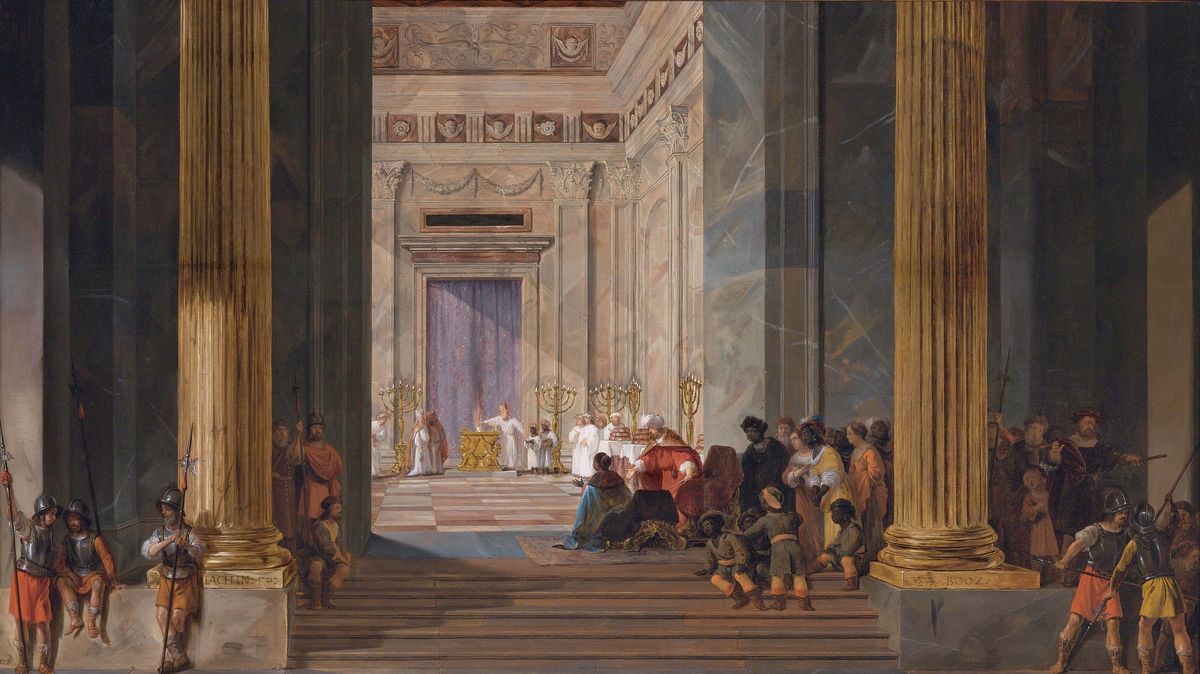
The Queen of Sheba before the temple of Solomon in Jerusalem, painting by Salomon de Bray, 1657. / Frans Hals Museum, Wikimedia Commons / public domain - Around 1200 – 1100 BC – the settlement turned into a prosperous town, now ruled by the Egyptians.
- Around 1000 BC – during the reign of the legendary King David Jerusalem became the capital of Israel.
- Around 957 BC (?) – The legendary Solomon’s Temple was (reportedly) built on the Temple Mount, Jerusalem Old City. It contained the Ark of Covenant, the legendary relic of the Israelites. Jerusalem was the capital of Judah, the Israelite kingdom. The development of the settlement extended to the present-day Jerusalem Old City.
- 587/586 BC – a Babylonian army of Nebuchadnezzar invaded Jerusalem and destroyed much of it. Solomon’s Temple was destroyed.
- 538-516 BC – Jews returned to Jerusalem from Babylon and the Second Temple (Herod’s Temple) was constructed on the Temple Mount – initially as a rather modest structure.
- Around 485 – 445 BC – Jerusalem was destroyed and partly or fully abandoned. After this period Jews returned to their capital and rebuilt it.
- 63 BC – the city was captured by the Romans, Pompey the Great.
- 37 BC – 4 BC – Jerusalem was captured and ruled by Herod the Great, a vassal of the Roman Empire. This despotic king started ambitious developments in Jerusalem: enlarged the Second Temple, expanded it (Western Wall is part of this expansion), and improved water supply and transport systems. In spite of the splendid developments, his controversial rule angered Jewish people.
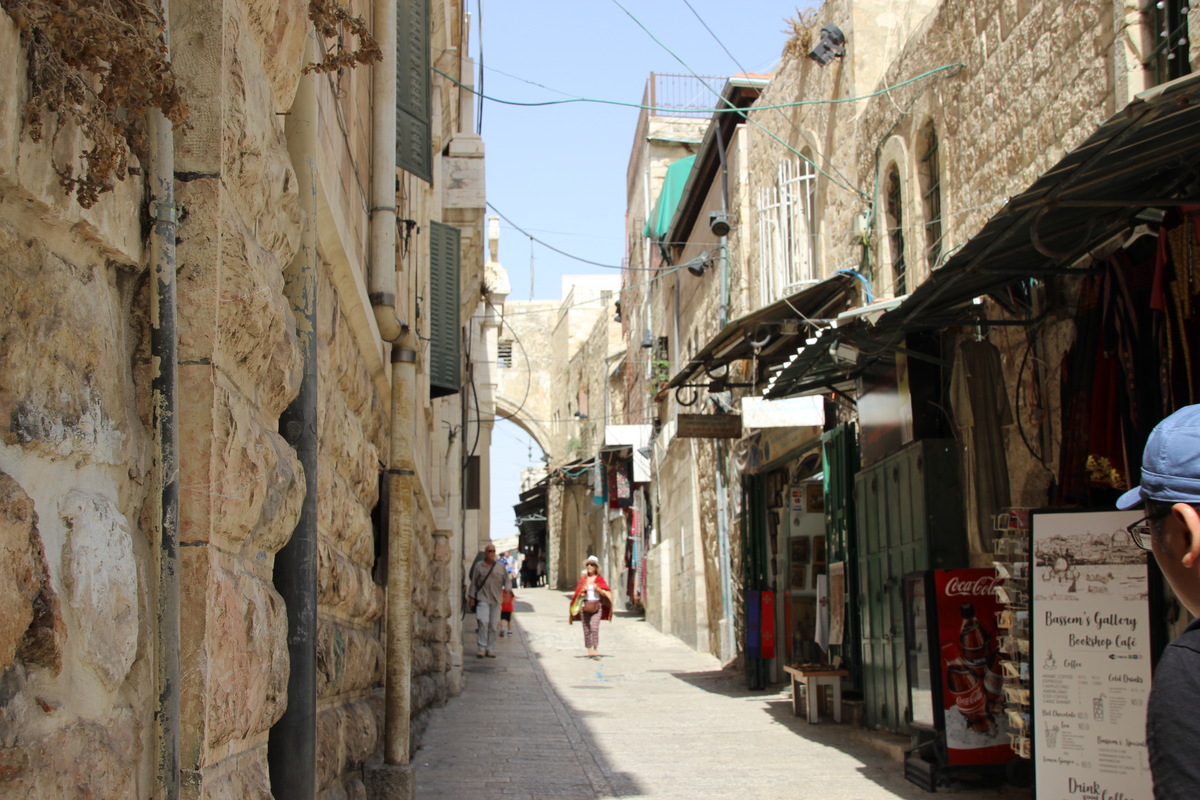
Via Dolorosa, Jerusalem./ Gary Todd, Flickr / public domain - 30 or 33 AD – Jesus was arrested, tried, and crucified in Jerusalem by Romans. These events later turned Jerusalem into the most important religious center of Christianity.
- Around 66 – 73 AD – the civil war and an uprising against the Romans led to the total devastation of Jerusalem. Nearly every building, including the Second Temple, was razed to the ground. The city was abandoned.
- 129 AD – upon the decision of Emperor Hadrian Romans started to develop a new city on the site of Jerusalem Old City. This city was named Aelia Capitolina and the new central feature of this city was a temple of Jupiter on the Temple Mount. The city was off-limits to Jews except for one day, Tisha B’Av, the day when the ancient Jewish temples were destroyed.
- 335 AD – with the proclamation of the Edict of Milan (313 AD) Christianity was recognized and the construction of churches was allowed. In 335 the Church of the Holy Sepulchre was constructed in Jerusalem over the purported tomb of Jesus and declared to be the holiest place in the Christian world.
- 614 AD – Persian and Jewish forces took Byzantine Jerusalem. Jews even started to construct their Third Temple but this construction was interrupted by the revolt of Christians in the city. In 630 AD Byzantine armies took over Jerusalem from Persians, they expelled and killed all the Jews in the city and its surroundings.
- 638 AD – Arabs conquered Jerusalem. They considered this to be their most sacred city already in 623 AD because according to their religious traditions, Muhammad’s ascent to heaven took place from the Temple Mount in Jerusalem. Only in 636 another city – Mecca with Kaaba shrine – was recognized as a more important religious center. Jews were allowed to return to Jerusalem. Arabs protected also Christian shrines. In later times, though, the attitude towards the Christians became more and more hostile.
- 691 – 692 AD – Dome of the Rock – a beautiful Islamic shrine was built at the site of the Second Temple on Temple Mount. Today this is one of the most recognizable landmarks in Jerusalem.
- 1033 AD – powerful earthquake destroyed many structures in Jerusalem Old City including the city walls.
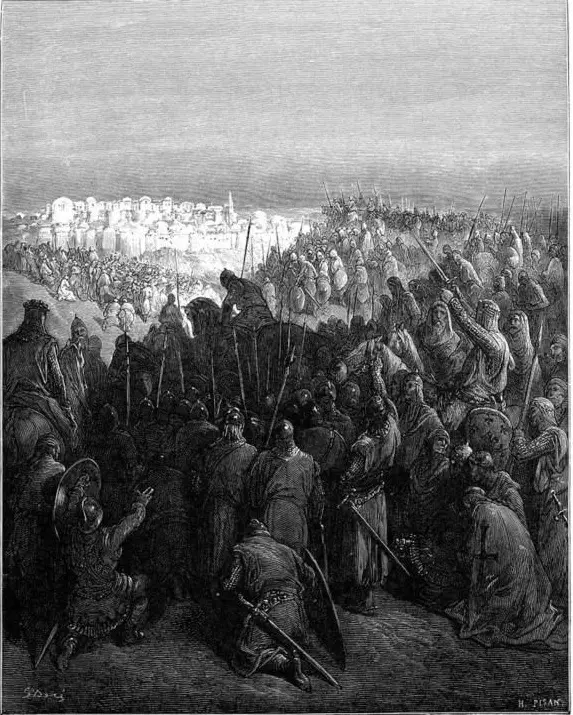
Enthusiasm of Crusaders at the First View of Jerusalem, Gustave Doré, 1883 or earlier. / Wikimedia Commons / public domain - 1099 AD – the First Crusade reached Jerusalem and European Christians took the city and massacred a major part of the local people – Muslims and Jewish people. The city was abandoned to a large extent. In order to prevent its repopulation by local people, numerous Christians from various regions of Europe, Asia, and Africa were brought to Jerusalem.
- 1187 AD – Muslims under the leadership of Saladin took over Jerusalem and expelled from it the European Christians, mainly Franks. Muslims and Jews started to return there.
- 13th century – Jerusalem was several times conquered by Tatars, Ayyubids (Egypt), and Mamluks (Egypt). There were few inhabitants.
- 14th – 16th centuries – under the rule of Mamluks the city gradually developed again.
- 1517 – the city was conquered by the Ottoman Turks and a period of relative prosperity and development started. Jerusalem was a somewhat provincial and peaceful city until the late 19th century.
- late 19th century – Christian pilgrimage to the city increased and more and more people started to live in Jerusalem, building new city districts outside the Old City. Also, Jewish people gradually returned to the city.
- 1917 – as a result of the World War I victory over the Ottoman Empire the United Kingdom took over control of the region including Jerusalem. Under British rule, the number of inhabitants in Jerusalem increased very fast, and in 1948 in Jerusalem lived some 165 000 people. Most of them were Jewish but a significant part – also Arab Christians and Muslims. The relations between Jews and Arabs gradually deteriorated.
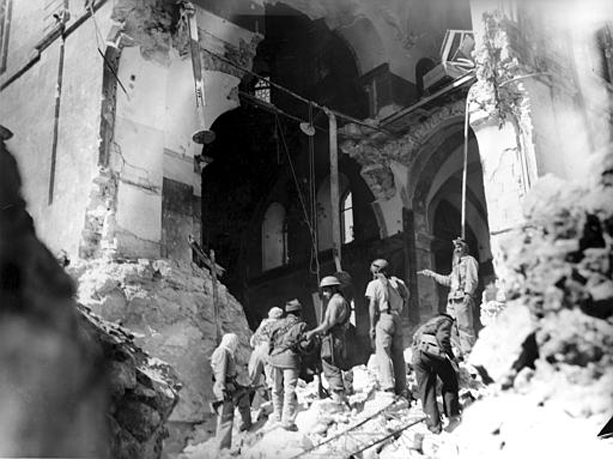
Arab Legion has blown up Tiferet Yisra synagogue in order to drive Jews out from Jerusalem, 1948. / Wikimedia Commons / public domain - 1948 – as the creation of the state of Israel was declared, the war between Arab states and Israel started. As a result of this war, Israel took control over West Jerusalem (does not include Old City) and Jordan (then – Transjordan) – East Jerusalem with the Old City. The expulsion of Arabs – Palestinians – from the territory of Israel and the constant threats to exterminate the state of Israel from the Arab side created a permanent conflict that continues up to this day. Jewish people were expelled from the Old City. Jewish and, to a lesser extent, Christian heritage was neglected and often – demolished and razed.
- 1967 – Israel gained control over East Jerusalem and surrounding areas. Access to the Jewish and Christian relics was regained. Step by step more and more Jewish people settled in this area. Nevertheless, according to the United Nations’ position, Jerusalem Old City is seen as an internationally administered territory or a part of Palestine (yes, even United Nations have not a single opinion on this).
Today the Jerusalem Old City remains a contested territory – both Palestine and Israel want to see Jerusalem as their capital city and under their full control.
Geography
The city is in a hilly area and rises some 50 m above the Kidron Valley to the east and southeast of it.
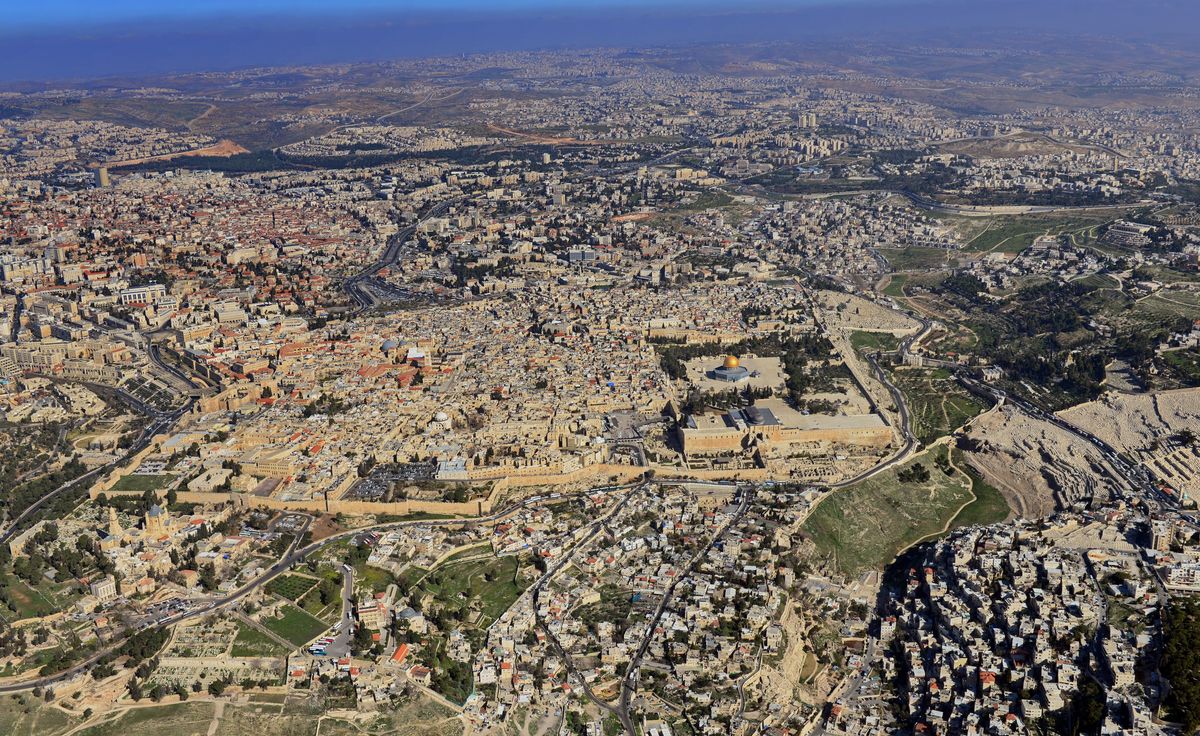
Jerusalem Old City is built on a hill of Cretaceous limestone. This area has a rather dry climate, thus the limestone has not been dissolved and is crisscrossed by caves and sinkholes.
Nevertheless, there have formed caves, including the famous caves and man-made channels from Gihon Spring – a whole system of complex prehistoric and ancient underground passages, basins, and other structures. This system secured the availability of water to the ancient city during the warfare and sieges – a luxury that was not available in other ancient cities in the Near East.
The massive walls of the Old City enclose a roughly 90 ha large area.
Since the 19th century Old City has been divided into four main areas: the Muslim Quarter (northeast), the Christian Quarter (northwest), the Armenian Quarter (southwest), and the Jewish Quarter (southeast).
Notable buildings
- Temple Mount – this hill could be the most sacred place on Earth. It is the holiest place in Judaism and Christianity and one of the holiest places for Islam. The first major shrine – Solomon’s Temple – was built there some 3000 years ago. Major rebuilding was done in Herod’s time around 20 – 15 BC. This place contains several monuments of global importance:
- Dome of the Rock – an important Islamic temple that was built over the remnants of the Second Temple in 691 – 692 AD. The current dome was built in 1022 – 1023. One of the oldest Islamic temples in the world and the most prominent structure in Jerusalem Old City. In it is located Foundation Stone – the legendary place where God created the world and humans.
- Al-Aqsa Mosque – one of the holiest Muslim places, originally constructed in 705 AD, the current structure is from 1036.
- Western Wall – remaining part of the Second Temple (built mainly in 20 – 15 BC), the holiest site that is available to Jews.
- Well of Souls – legendary cave / rock-cut chamber under the Dome of the Rock, under the Foundation Stone. It is seen as the center of the world, and, according to some Muslim beliefs, this is a bottomless pit with Paradise underneath.
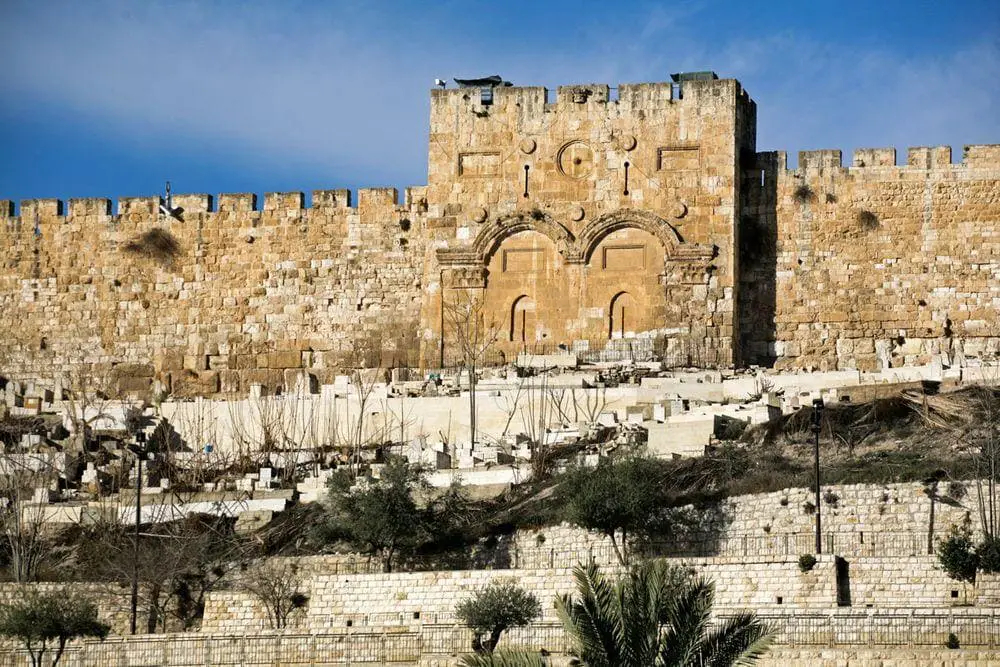
Golden Gate, Jerusalem / Svetlana Grechkina, Flickr / CC BY-SA 2.0 - Walls of Jerusalem – the fortification walls around the whole Old City. The development of city walls started in the Bronze Age but the current massive walls were built in the times of the Ottoman Empire, around 1537 – 1541. The walls are 4.018 m long and some 12 m high. There are seven main gates and two minor gates as well as 34 watchtowers.
Golden Gate at the Temple Mount is an unusual, legendary place for the Jews: this gate is closed and, according to the legend, it will open for Messiah who will enter the city through it.
Muslim Quarter
- Beginning of Via Dolorosa – the first seven stations of the path of Jesus through Jerusalem to his place of crucifixion.
- Church of Saint Anne, Jerusalem – well-preserved church of Crusaders, constructed in 1131 – 1138 in Romanesque style. The church was constructed in a place where, reportedly, the parents of St. Mary lived.
- Zedekiah’s Cave – enormous man-made void, limestone quarry under several quarters of Jerusalem. This is a legendary site and a site of Masonic initiation ceremonies.
Christian Quarter
- Church of the Holy Sepulchre – the holiest church and also – one of the oldest churches in the world. It was constructed in 335 over the purported tomb of Jesus.
- Mosque of Omar – old mosque next to the Church of the Holy Sepulchre. It commemorates the visit of the Caliph Omar to Jerusalem in 637 AD. Caliph declined the proposal to pray in the Church of the Holy Sepulchre in order not to desecrate it. Soon after a mosque was built on the site of his prayers. The current mosque was constructed in 1193 AD in a slightly different location.
Armenian Quarter
- Cathedral of Saint James, Jerusalem – the main church of the Armenian Patriarchate of Jerusalem. It was constructed in the decades before 1162 AD.
- Church of Saint Toros – Armenian Orthodox church with a unique collection of some 3 899 ancient manuscripts (illuminated manuscripts). The second largest collection of these manuscripts after Matenadaran in Yerevan.
- Monastery of Saint Mark – Old Syriac monastery and church, established in the 6th century in a pilgrimage site. Some consider that this is the site of the Cenacle – the Last Supper.
- Tower of David – the site of the ancient citadel of Jerusalem. Now there are ruins of the former fortifications that are some 2500 – 2700 years old. Now there is a museum of Jerusalem’s history.
Jewish Quarter
- Hurva Synagogue – large synagogue that was constructed in 2010 on the site where several Jewish shrines and synagogues have existed since the 1st – 2nd centuries AD. The current building is similar to the Neo-Byzantine structure that was built in 1862.
 Linked articles
Linked articles
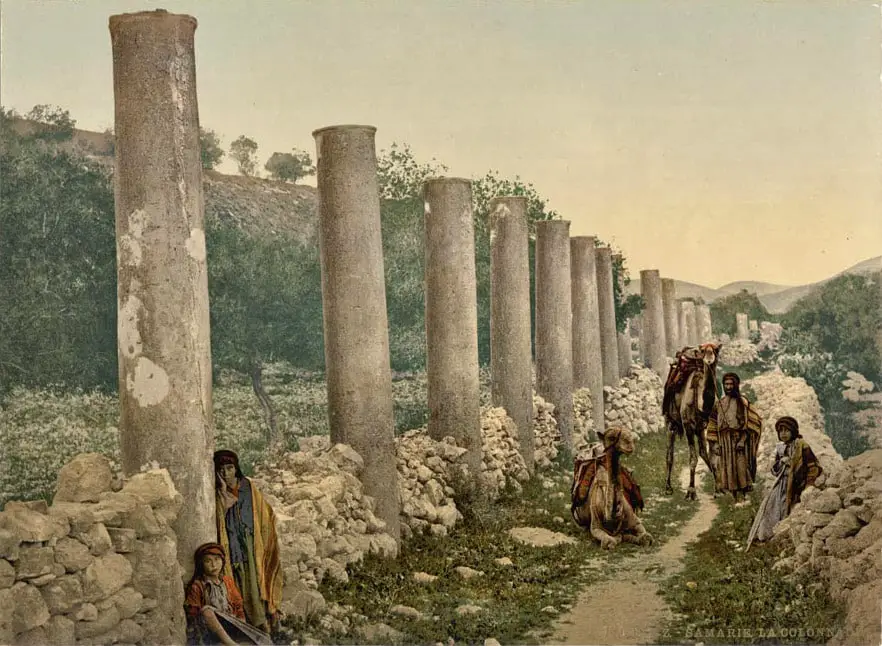
Wonders of Palestine
Palestinian territories (or better simply – Palestine) has very special landmarks. This land has experienced the birth of Judaism and Christian religions and plays a very important role also for Muslims. Billions of people see this land as the place of divine presence, with many sites linked to events of extremely high importance for believers and historians.
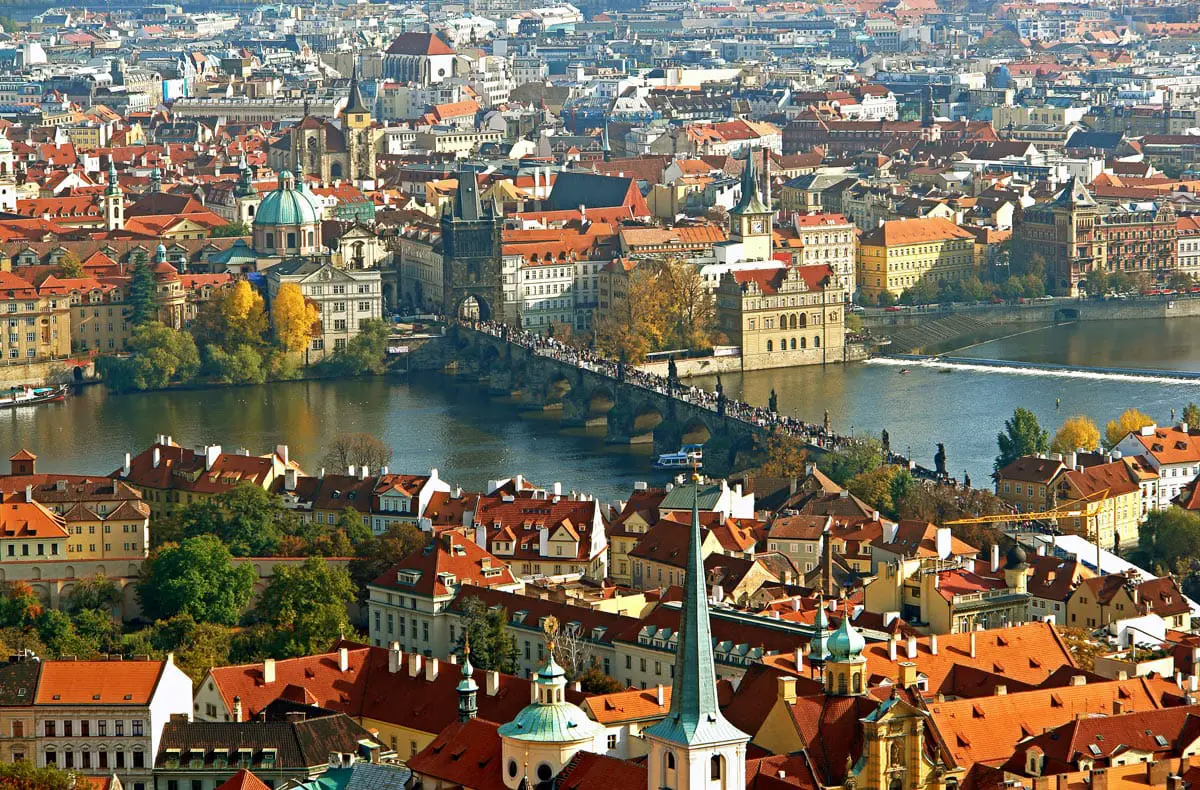
Cities and towns
Many of the most popular and exciting landmarks in the world are cities and towns. Millions of tourists are attracted to such cities as Venice, Florence, Prague, and Jerusalem. They never fail to impress and one will always find something new and unexpected here.

Ancient cities and towns
It turns out that urban planning is a very old profession. The urban fabric of ancient settlements – their structure and evolution gives a lot of food for thoughts about the nature of humans and civilization.
Wondermondo includes in the category of ancient cities and towns those settlements which have developed as urban areas at least 1500 years ago: around 500 AD.
 Recommended books
Recommended books
Jerusalem: The Biography
How did this small, remote town become the Holy City, the “center of the world” and now the key to peace in the Middle East? In a gripping narrative, Simon Sebag Montefiore reveals this ever-changing city in its many incarnations, bringing every epoch and character blazingly to life. Jerusalem’s biography is told through the wars, love affairs, and revelations of the men and women who created, destroyed, chronicled and believed in Jerusalem.
Rose Book of Bible Charts, Maps, and Time Lines
The #1 Bible reference book celebrates its 10th anniversary with an updated 230-page edition that features more Bible maps, charts, and illustrations than the original! This stunning, easy-to-understand reference book still provides the same full-color, REPRODUCIBLE Bible charts and overviews that made the original a favorite, but in an easier-to-use, updated format!

